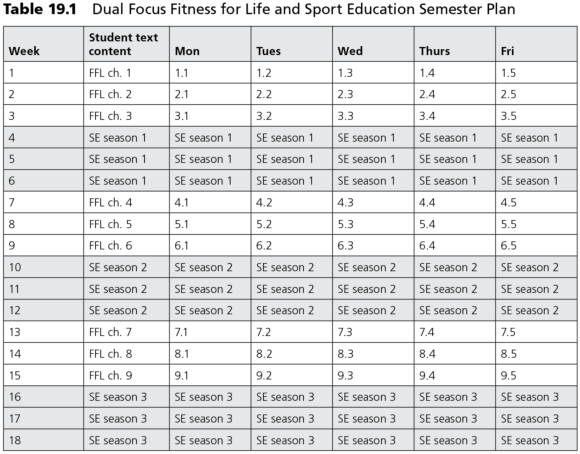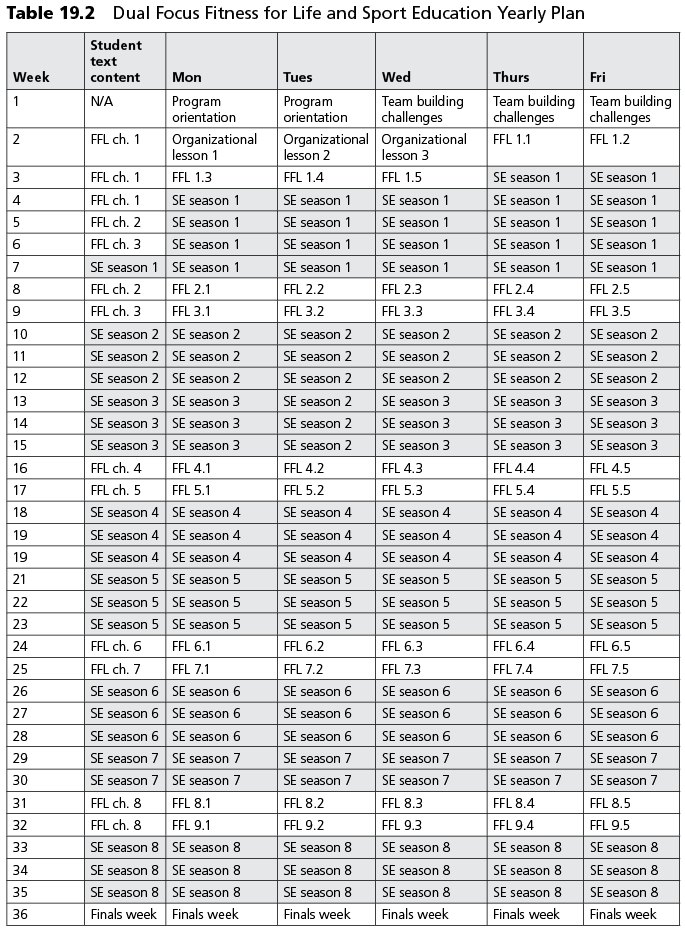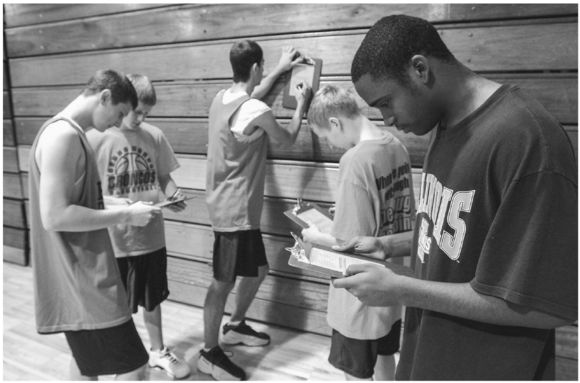Establishing a Distinct Program Theme
This is an excerpt from Complete Guide to Sport Education 3rd Edition With Web Resource by Daryl Siedentop,Peter Hastie,Hans Van Der Mars.
Reflect on your own physical education experiences when you were in school. Can you recall your physical education having a distinct theme? Can you honestly state that you learned something valuable and meaningful because of your participation in it? Do you believe that all students would view these experiences in similar ways? Having a distinct program theme and organizing the content accordingly will help your program remain focused. It will also help you avoid having a program that is a repeat of the same short units that are nothing more than a smorgasbord of content and that have little if any focus on providing students with meaningful learning experiences.
A quality physical education program is one whose content reflects a distinct program theme (Tannehill et al., 2015). That is, there is coherence in what students experience as they complete the program. Examples of program themes include sport, fitness, outdoor pursuits, or personal and social responsibility. An agreed-upon program theme reflects and is determined by multiple factors. Key factors include the local topography and climate, teachers' values and beliefs, and their expertise specific to what they can teach. For example, teachers with a strong content background in outdoor pursuits and who live in more mountainous regions would most likely build a program aimed at developing students' skills and knowledge through activities such as hiking, climbing, mountain biking, canoeing, and fly-fishing. Similarly, teachers who value and believe in the importance of physical fitness and who have strong content knowledge in this area are more likely to develop a fitness-themed program. These teachers might consider incorporating the Fitness for Life model (Corbin & Le Masurier, 2014), which includes content offerings aimed at helping students become informed fitness consumers. Teachers with both broad and in-depth content background in sport would likely make sport the central theme, and so Sport Education would be the logical curricular approach to build students' competency, literacy, and enthusiasm for sport. Choosing a fitness- or outdoor-themed program does not mean that the principles embedded in Sport Education cannot be used. Throughout this text, we have made reference to several examples of how Sport Education can be used with content not typically described as sport.
Can Programs Have More Than One Theme?
In most cases, because they are the only teacher in the program, physical educators in elementary schools can put their own stamp on how a program is organized. Later in this chapter we will provide more detail on how an elementary program can be structured around a theme.
Depending on the school size, secondary school programs may have anywhere from three to six physical education teachers on staff. It is not uncommon for teachers in one program to have differing values and beliefs about what the program theme and focus should be and what content should be included. This does not mean that the physical education program cannot have a distinct theme. Moreover, programs can have a dual theme. For example, over the last three decades there has been a shift in physical education programming, given the growing interest in the promotion of physical activity from a health perspective. As a result, we have seen an increased emphasis on building in more physical fitness content in K-12 programs. We view a dual-themed focus on Sport Education and Fitness for Life (Corbin & Le Masurier, 2014; Corbin, Le Masurier, & Lambdin, 2018) as a natural and defensible blend. Two examples of a junior high program with a dual-themed focus are presented in Tables 19.1 and 19.2. Table 19.1 shows a program for a school where physical education is offered every day and in both grade levels, but only for one semester (i.e., 18 weeks, in either fall or spring). Table 19.2 includes a junior high school program with physical education offered every day in both grade levels over the full year. Later on in this chapter (see tables 19.5 and 19.6), when we address the use of yearly block plans, we will present another example of a dual-themed sport and fitness program in a junior high school.


In high schools, graduation requirements for physical education vary from district to district. In many districts, high school students have physical education for only two semesters or less. Moreover, the length of high schools classes varies, depending on their school's schedule. While some schools employ a standard 50-minute lesson schedule; others, where the block system is in place, have lessons lasting from 75 to 90 minutes. Still other schools use a combination of these two schedules. Also common are schools that follow an A-B format (often named after the school colors, e.g., Blue and White or Green and Gold), which results in students having physical education every other day.
In high schools with a one-year (i.e., two-semester) physical education requirement, a logical approach to creating a sport and fitness concepts dual-themed program is for all students to complete the Fitness for Life course in one semester, and use the second semester to choose a course that includes various Sport Education seasons. In this chapter's web resource, we provide examples of how these two content areas could be integrated over the course of two consecutive semesters. You may not be able to cover the entire set of chapters included in the Fitness for Life program. However, if your program provides positive experiences in the first two courses, that may attract students to an additional elective credit course titled Advanced Physical Education, during which the dual-theme focus is continued, or a single sport or fitness theme is extended.

These high school students are completing fitness-related self-assessments as part of a Fitness for Life unit within a course that includes various Sport Education seasons.
More Excerpts From Complete Guide to Sport Education 3rd Edition With Web ResourceSHOP

Get the latest insights with regular newsletters, plus periodic product information and special insider offers.
JOIN NOW
Latest Posts
- Sample mental health lesson plan of a skills-based approach
- Sample assessment worksheet for the skill of accessing valid and reliable resources
- Help your students overcome what holds them back from making health-promoting choices
- Example of an off-season microcycle
- Modifying lifts
- Screening for multilevel programs in a team environment


